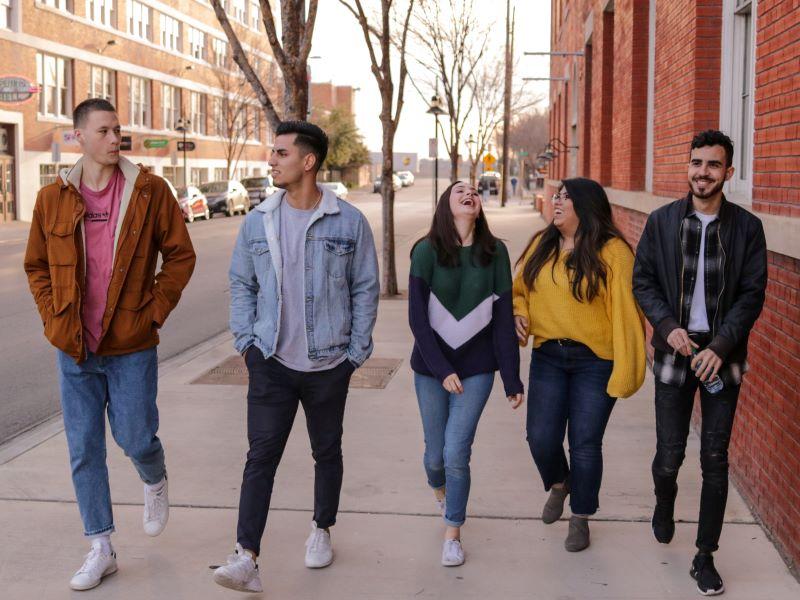Big institutions take time to move. For global partnerships between universities to work, there needs to be a focus on building mutual confidence and buy-in. That means starting small and working up.
Higher education professionals are scattered across the world, thinking, planning and advancing all kinds of agreements – facilitating student exchanges, dual-degree programmes, visiting professorships, research collaborations and more.
In this frenzy of activity, it is hard to find room to think about the bigger role that universities have to play on the global stage – to advance progress towards the United Nations’ Sustainable Development Goals (SDGs) and tackle “wicked problems”, such as climate change and health disparities.
- How universities can build meaningful collaborations to solve societal challenges
- Supporting student action on sustainability
- Enhance your research through public engagement and collaboration
Our team at Northwestern University’s Buffett Institute for Global Affairs creates cross-border partnerships – bringing scholars from multiple geographies and disciplines together to tackle such challenges. Last year, we became the first Secretariat of the U7+ Alliance of World Universities, a network of more than 50 institutions across 20 countries dedicated to driving progress towards the SDGs.
The alliance has helped cement members’ commitment to sustainability, convened student leaders to brainstorm solutions to climate change and the global gender gap, and supported work to develop human-centred artificial intelligence. Along the way, we’ve learned some key lessons about building global partnerships that last:
Don’t rush in
Invest time in finding the right partners at the institutional level, but also ones whose values and outlook align with yours. This takes patience and clarity on your own values. For example, in line with our commitment to supporting work addressing the SDGs, we look for partners with a focus on these global goals.
We value reciprocation. A potential partner’s responses to small acts of diplomacy can go a long way towards revealing what kind of collaborator they may be. When we’re interested in exploring a partnership, we start by expressing genuine interest in a potential partner’s work: we show up to their events and invite them to ours; we amplify their news; we may invite them to be part of a panel discussion, offering an opportunity to showcase their work. We demonstrate interest through small actions before diving straight in, and we pay attention to whether this is reciprocated.
Don’t shy away from the perception that you’re making incremental progress. Embrace it, and encourage activities that increase the number of touchpoints between institutions. Follow up quickly after initial meetings and brainstorms, with short emails reinforcing enthusiasm for the ideas discussed, or making introductions to others who may be able to further shared goals. And don’t forget the value of a good old-fashioned meal or social gathering, public health guidelines permitting. Breaking bread remains a time-honoured way to make connections at a personal level that fuel partnerships at the institutional level.
Relationships matter
It might be tempting to think of large research universities as bureaucratic behemoths governed by strategic plans, reporting lines and budgets. Those are important, of course. But it really comes down to people. Relationships with individuals help weather inevitable bumps in the road when building partnerships with institutions with different cultures, norms and goals.
When one of our attempts to collaborate with an institution stalled, despite many congenial meetings, it turned out that we weren’t aware of their unwritten rules. Both institutions wanted to engage students in dialogues related to the SDGs but struggled to align on how to go about it. It took trial and error – “what ifs…?” and “how abouts…?” – along with reflection on what ideas yielded enthusiasm, to find a process that worked within two very different organisational structures. It required the humble act of asking for advice versus strictly reactions to our ideas.
Engage in this time-intensive process of building relationships at multiple layers of an institution. The U7+ Alliance started as a tight-knit circle of university presidents, which made sense when solidifying the alliance required a strong surge of political will from the top. But we quickly learned that to keep the engine running – eg, forming working groups that could tackle large-scale projects – required a broad spectrum of stakeholders and expertise. We needed faculty with specialist knowledge, administrative staff with strong project management skills, technical expertise, student perspectives and more to become an active alliance.
Go after quick wins
Look for areas where you can make quick progress and achieve small steps forward to build confidence among participants in a cross-institutional effort. This will boost institutions’ willingness to commit more time and effort, enabling the group to launch more challenging projects in the future. Don’t be overambitious at the start, as a failure early in a collaborative endeavour can really dent confidence. Give people a chance to get to know each other first on a relatively low-stakes project you know everyone can get behind.
We started by having members sign a statement urging G7 political leaders to prioritise the interests of future generations and mitigate the effects of climate change. This paved the way for a bigger step, where 30 member universities committed to lowering emissions and boosting climate education. This has built confidence that we can do great things together, and thus a willingness on the part of busy leaders to invest in this work.
Embrace messiness
Accept that people are going to have different levels of commitment at different points. Faculty and staff transitions are inevitable. Some members will show up more often than others. Accept and show appreciation for what each person brings, no matter how large or small their contributions, and don’t give up on less committed members. Less engagement does not signal weakness or laziness; it’s often a sign that you haven’t keyed into the member’s interests and motivations.
If an institution isn’t contributing, ask them if they are interested in other areas. One of our partnerships appeared to be at a dead end after many attempts at engagement in work to establish formal processes. After taking a step back, we asked if they wanted to host a more informal dialogue. This turned the table entirely and led to an entire series of dialogues. Find and build on interest and capacity where it exists, and you’ll be surprised where it leads. If in doubt, pick up the phone and have a one-to-one conversation.
Engage alumni
Your alumni are critical champions at the local level. They can serve as bridges between the academy and the real world, making connections to local community leaders, businesses, charities and other prospective collaborators. Or they can simply serve as ambassadors, spreading news of your achievements.
Our alumni have helped connect us with journalists, hosted gatherings bringing together local experts and amplified news through their networks. This can provide a big reputational boost and give rise to truly collaborative work at a hyperlocal level.
Share credit and communicate contributions of all stakeholders
In large partnerships, it is easy for major accomplishments to go uncelebrated as when everyone wants to share credit, no one grabs the microphone. Develop a communications strategy to help each university partner share the news of their impact, as individual institutions and as part of a network.
We’ve developed communication toolkits, including press releases in various languages, social media posts and graphics that each member university can tailor to share news with their audiences. We work with communication leads at each member university to promote major announcements, such as the U7+ Statement on Climate Change and Sustainability. This approach has yielded consistency in messaging and more amplification than disparate messaging efforts could.
Know when to walk away
Accept that you may not always find a good fit. It’s important to recognise when a partnership or a relationship does not work. There can be many reasons – timing, geopolitical factors, campus politics or simply different strategic objectives. It’s OK to put things on the back burner to revisit. These relationships take tremendous commitment and focus, and a handful of true successes is worth a mountain of paper agreements.
Annelise Riles is executive director of the Northwestern Buffett Institute for Global Affairs and associate provost for global affairs at Northwestern University. Meghan Ozaroski is director of global collaboration at the Northwestern Buffett Institute for Global Affairs.
If you found this interesting and want advice and insight from academics and university staff delivered directly to your inbox each week, sign up for the THE Campus newsletter.




comment